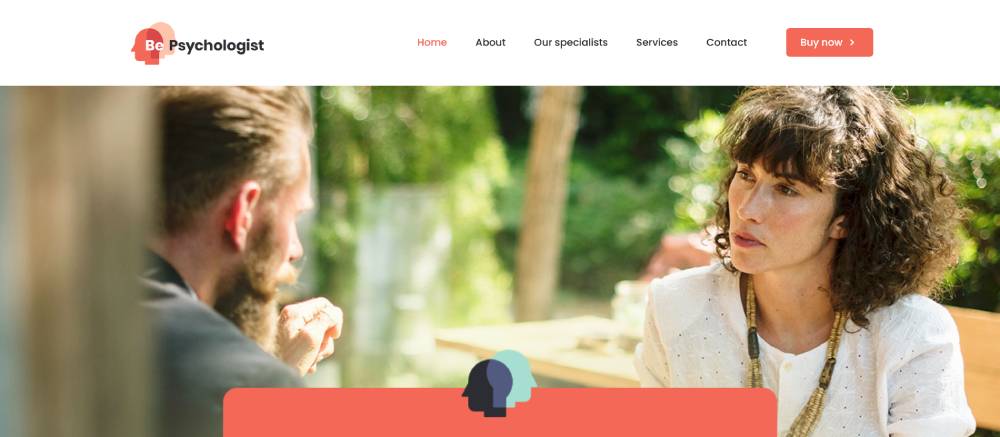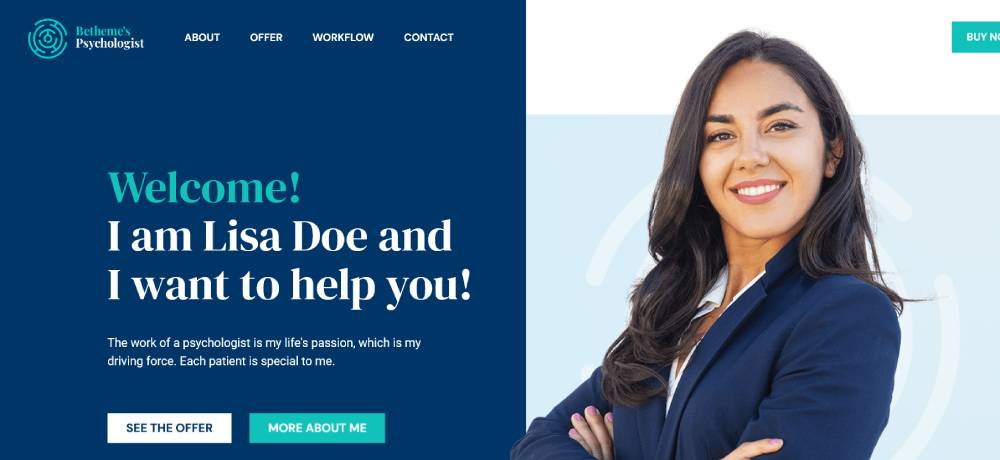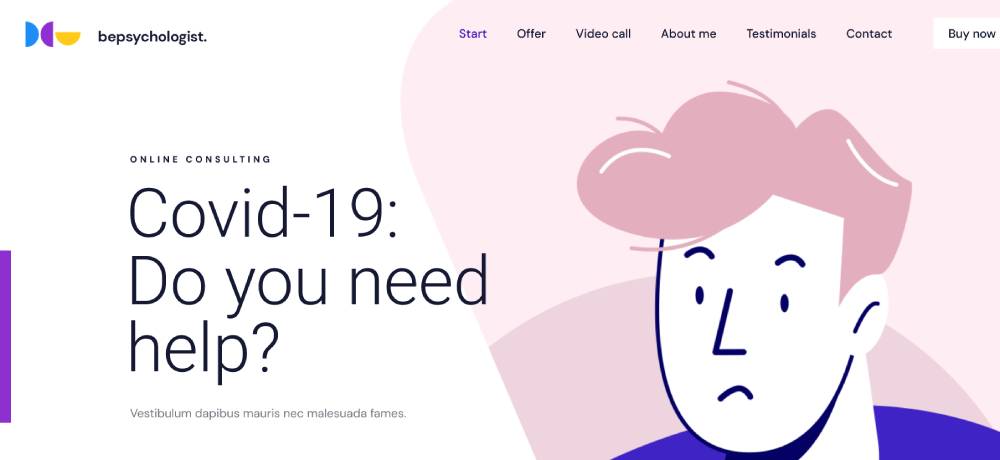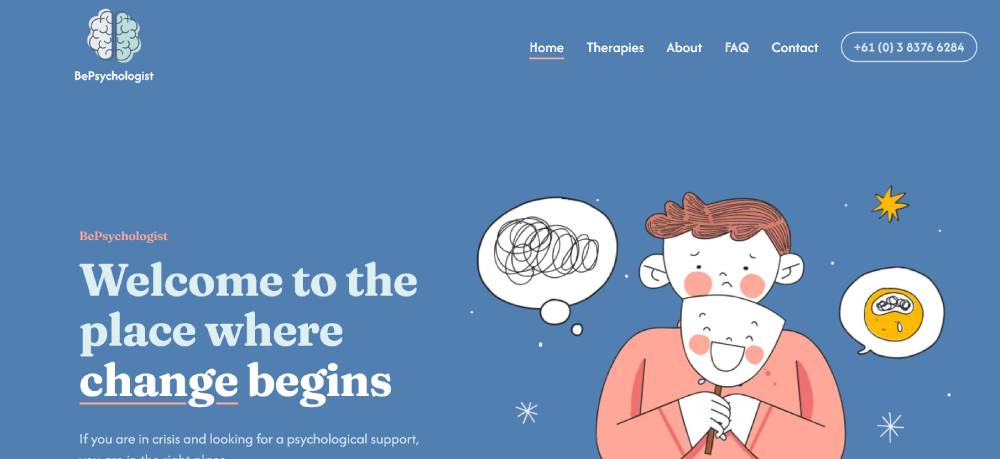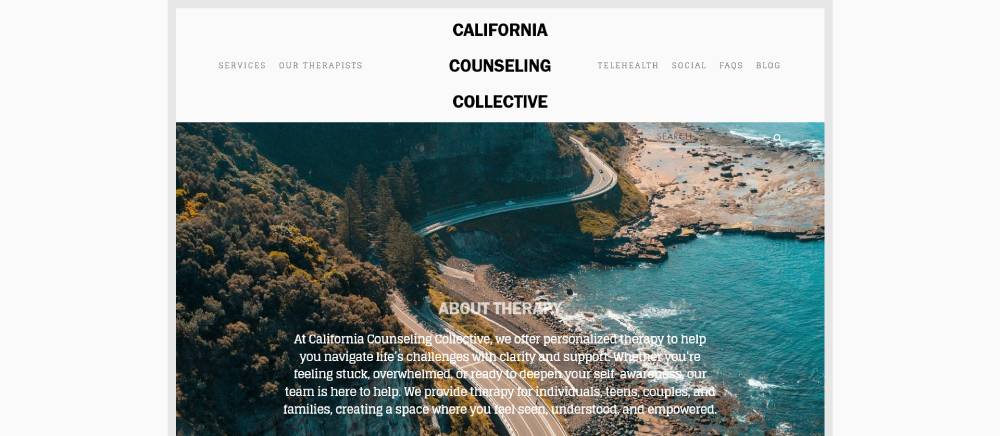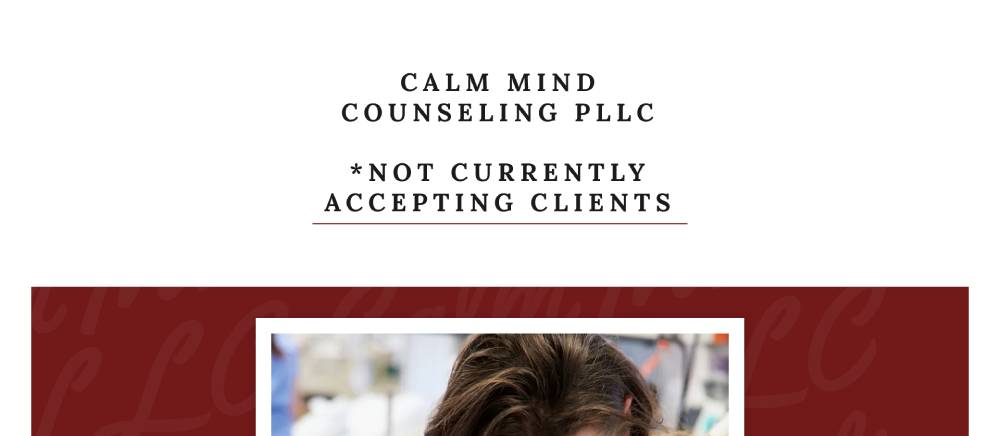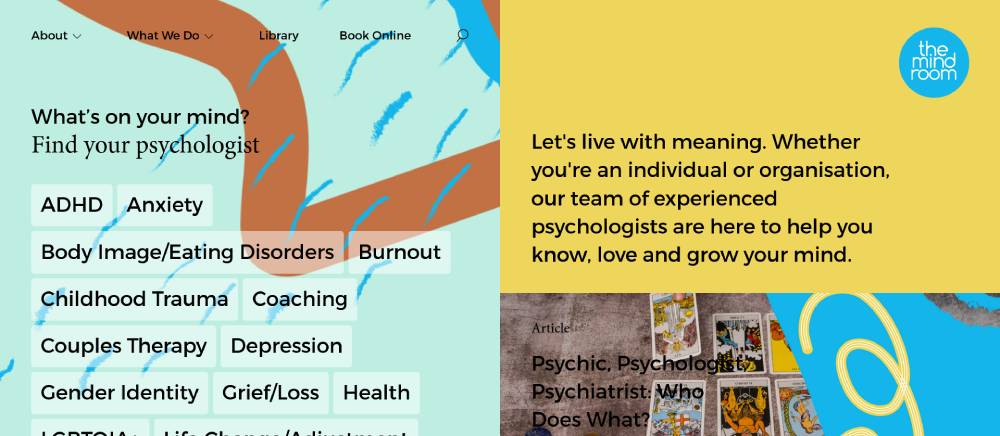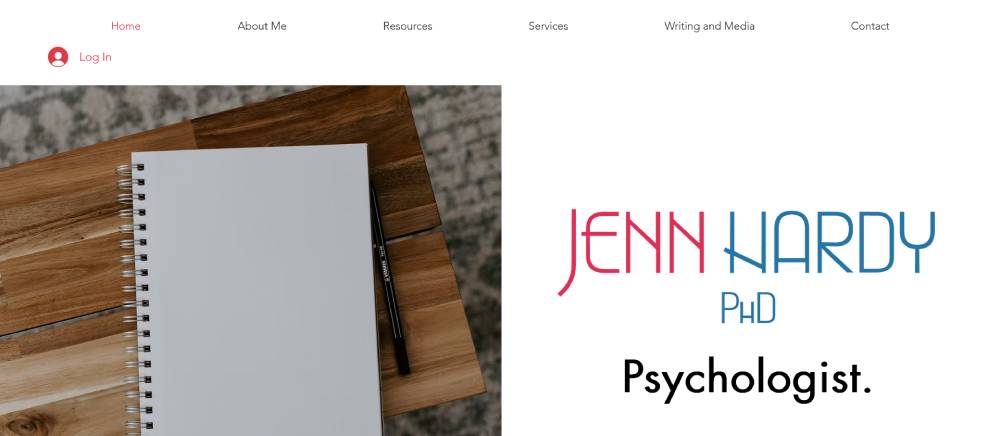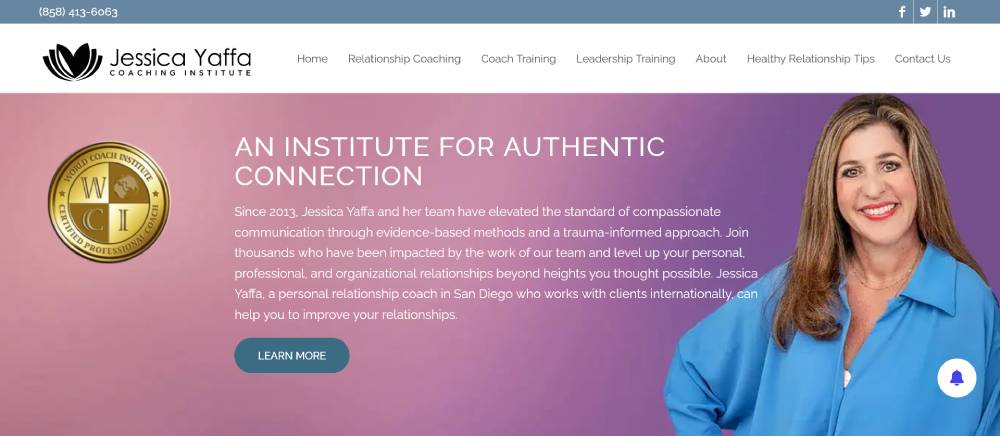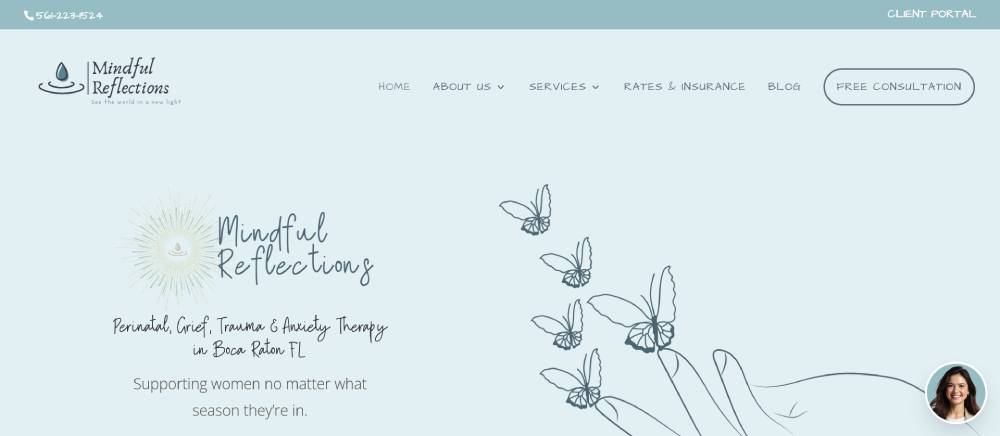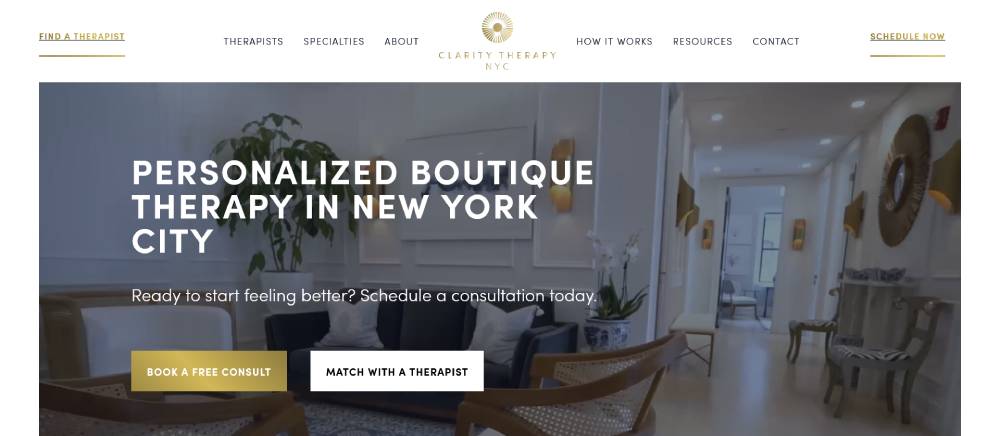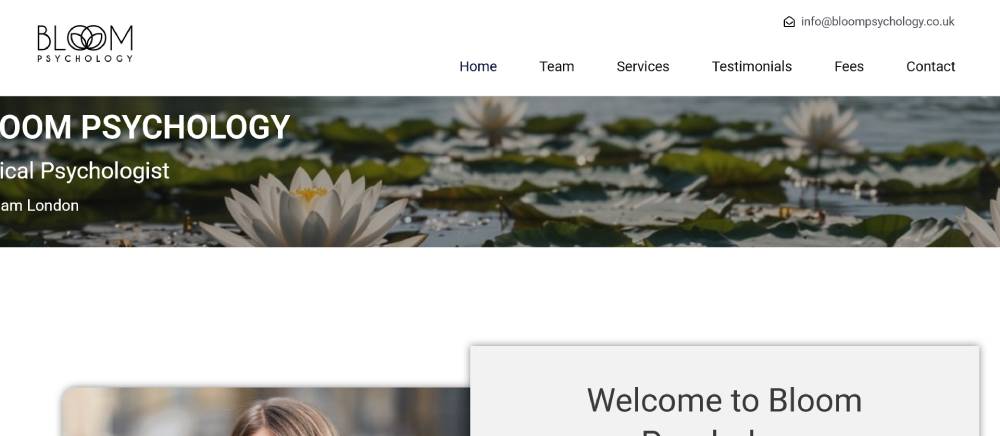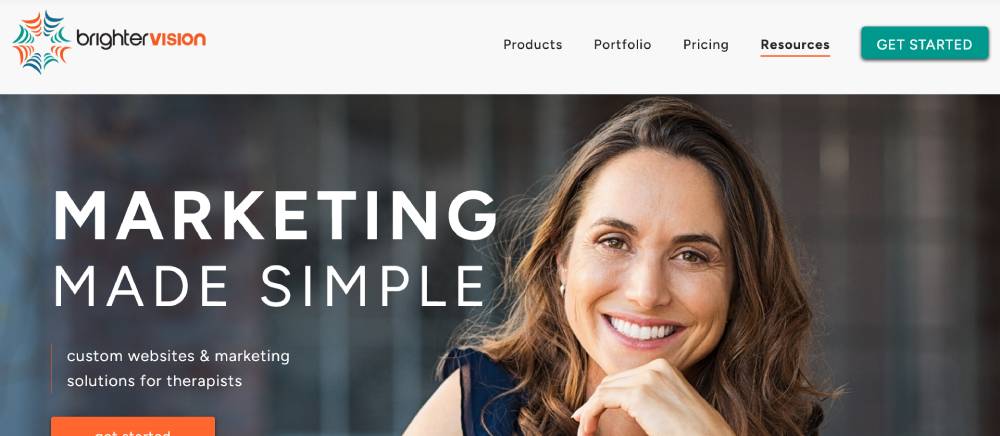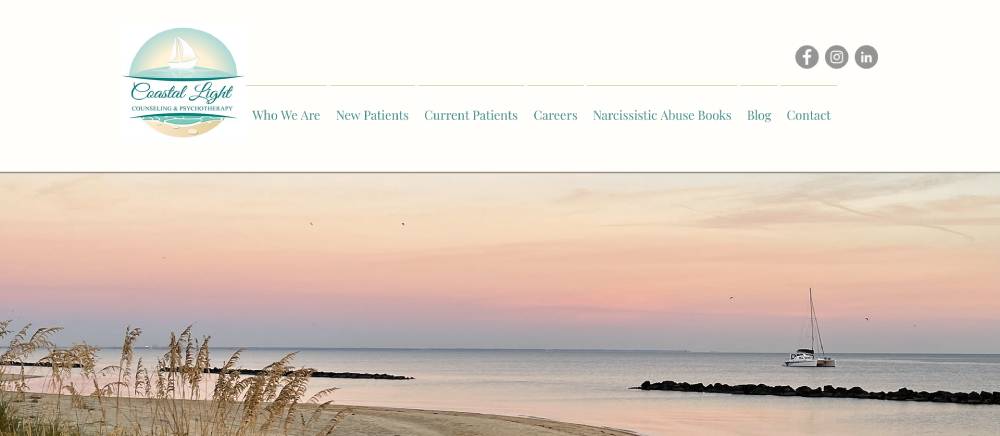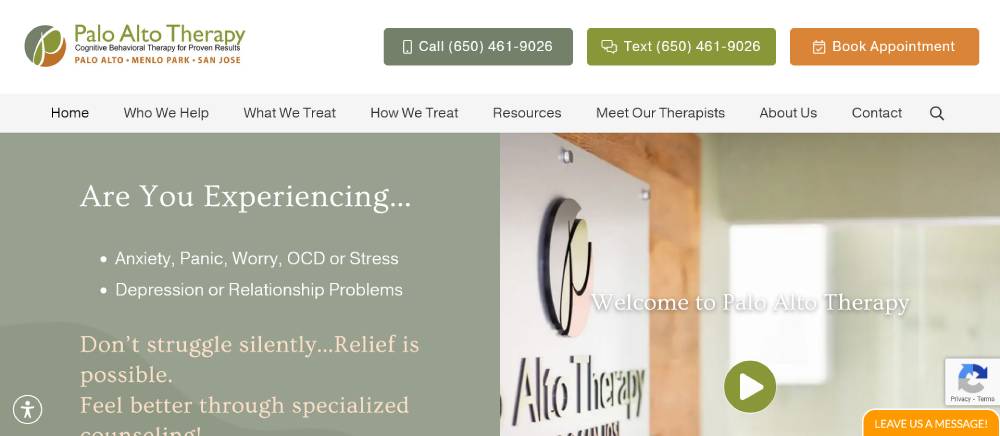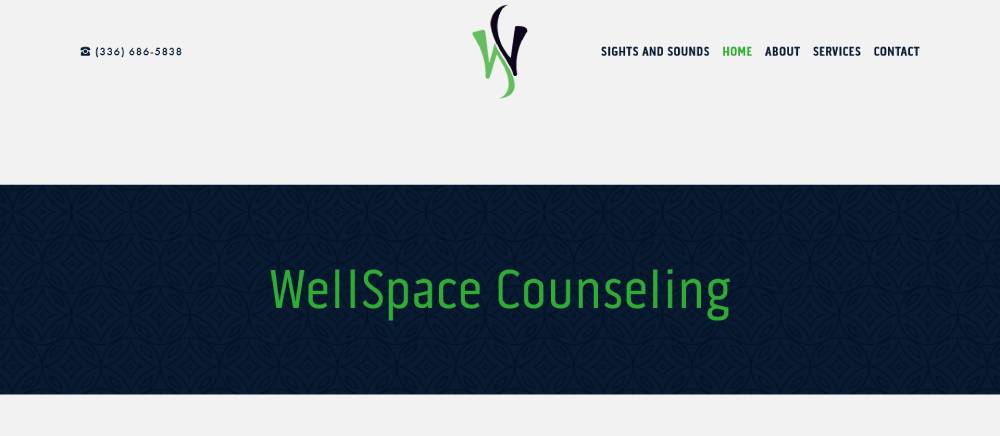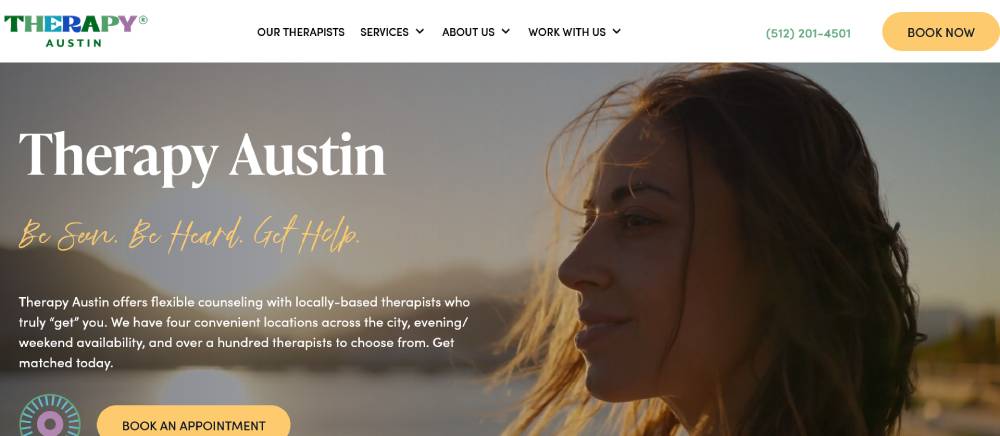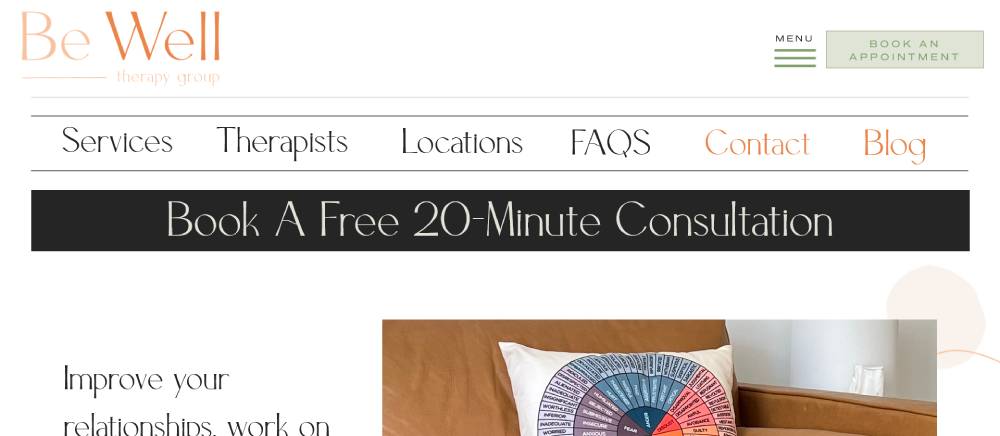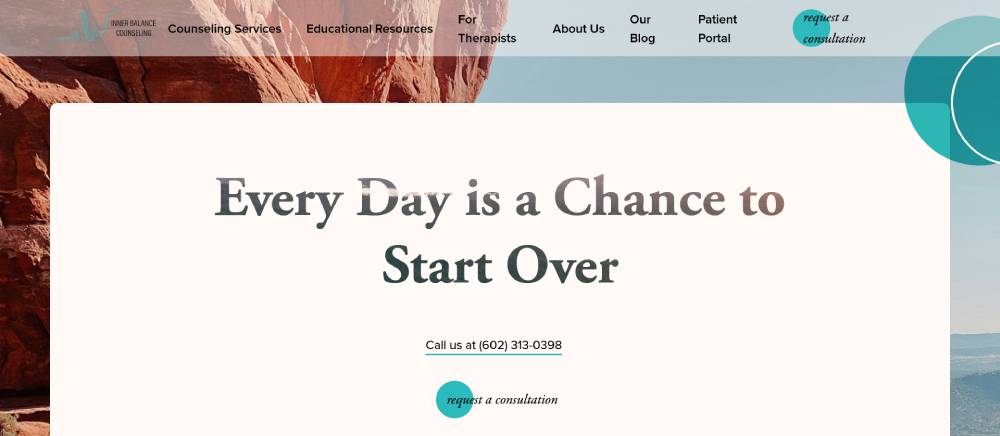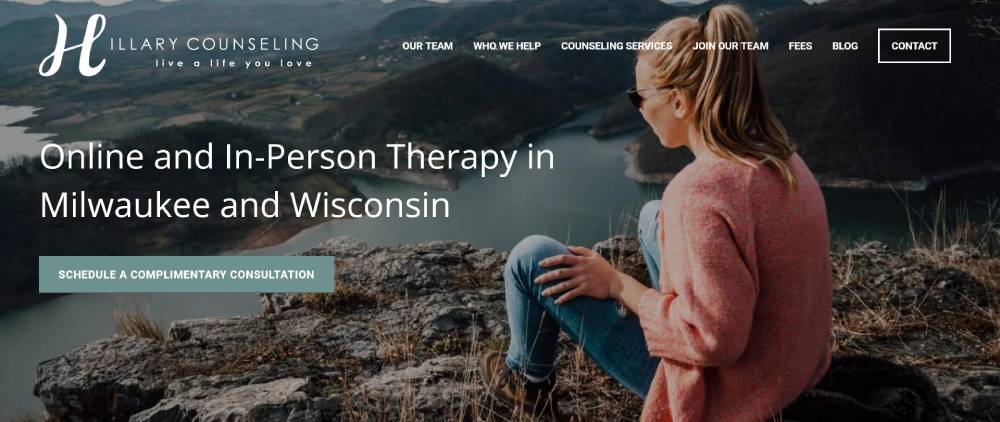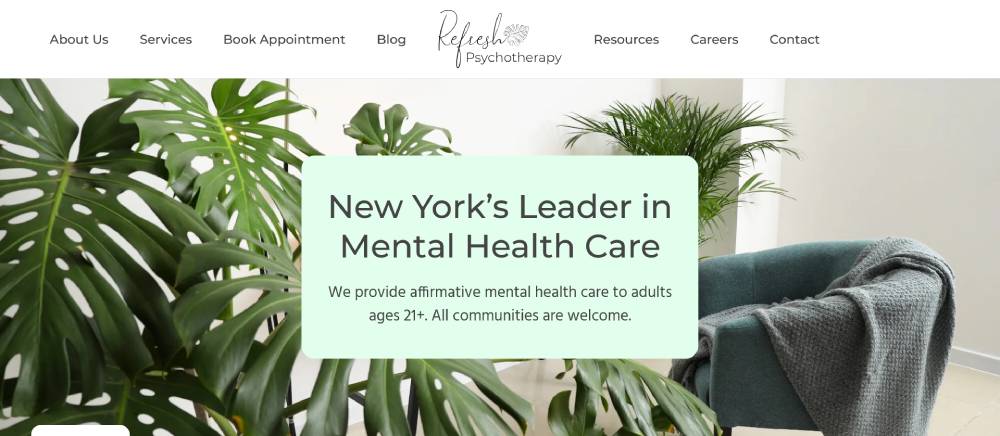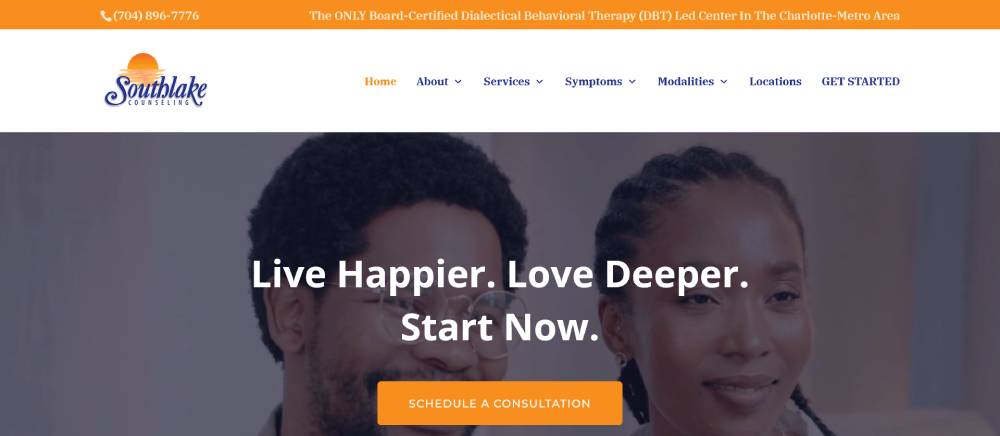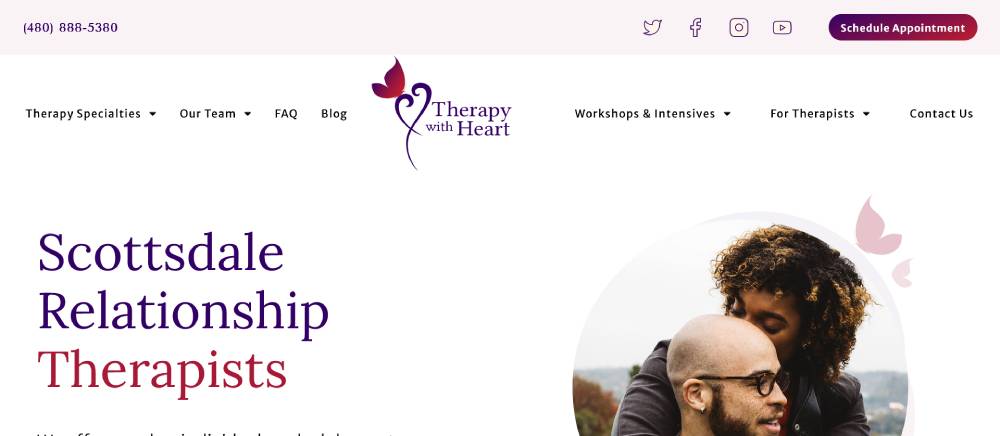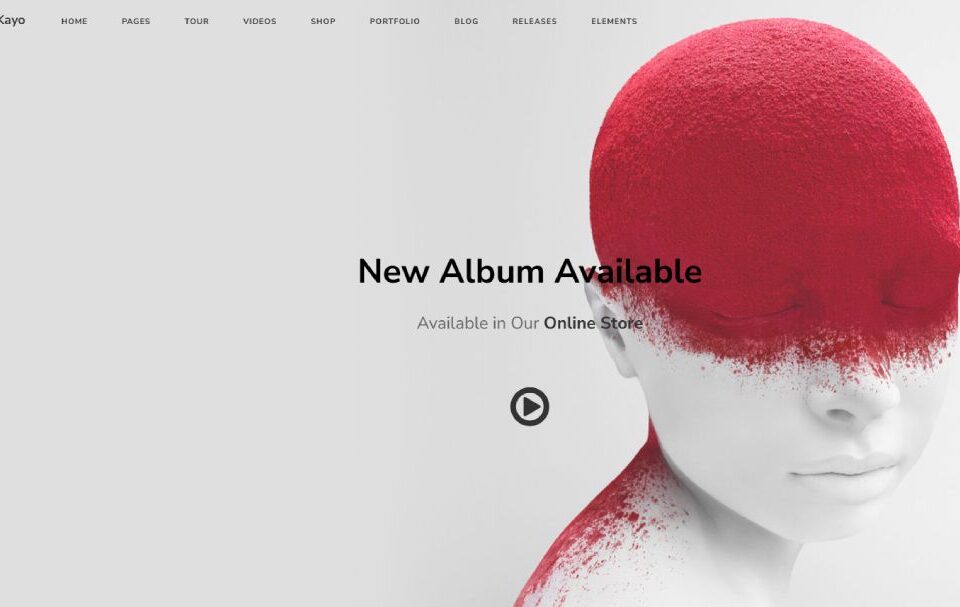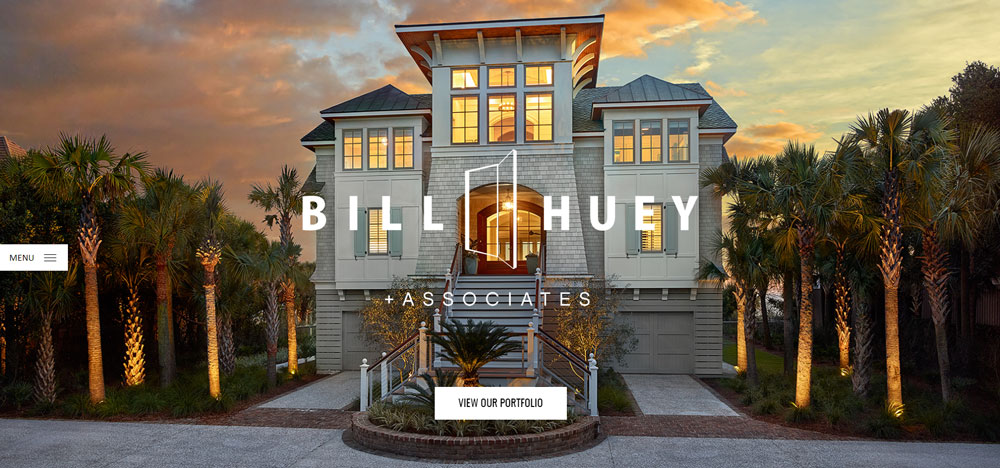
Home Builders Website Design Examples Out There to Inspire You
July 8, 2025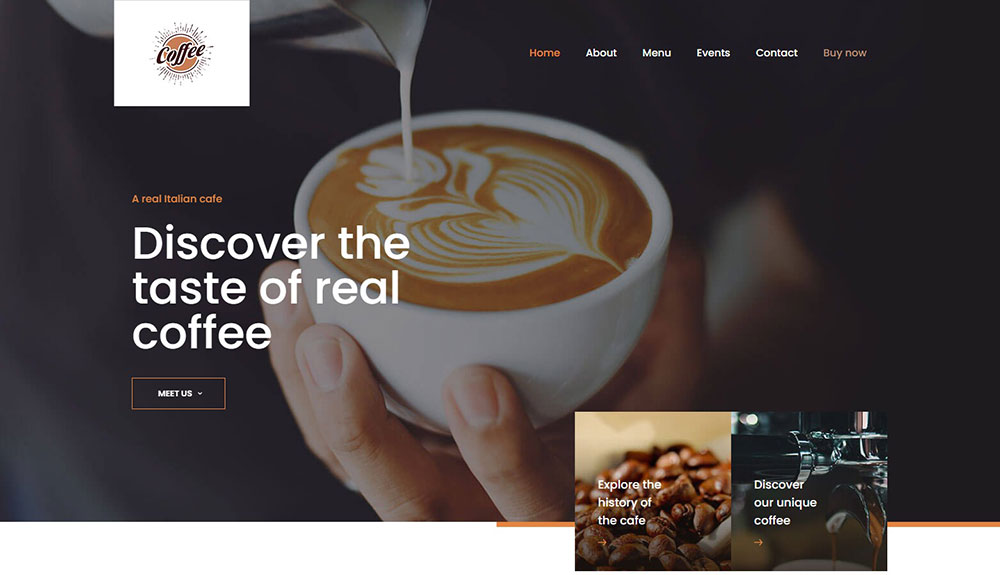
Cafe Website Design Examples To Check Out
July 16, 2025Your practice's website might be the first interaction potential clients have with your services. Professional psychologist website design examples reveal how successful practitioners create trust, communicate expertise, and convert visitors into patients.
Mental health professionals face unique challenges online. Patients need reassurance before booking that first appointment. They're looking for credibility markers, clear navigation, and HIPAA-compliant systems that protect their privacy.
This article examines therapy practice web development strategies that work. You'll discover how leading psychology practices use user-centered design principles to build connection before the first session.
We'll explore:
- Trust-building elements that convert hesitant visitors
- Mobile-responsive layouts optimized for patient booking
- Content strategies that demonstrate clinical expertise
- Security features ensuring patient confidentiality
From minimalist aesthetics to comprehensive patient portals, these examples show how thoughtful design transforms online presence into practice growth.
Psychologist Website Design Examples
Be Psychologist
Be Psychologist 2
Be Psychologist 3
Be Psychologist 4
Therapy with Sarah
Clean typography combined with warm messaging creates an approachable yet professional atmosphere. The site uses soft color palettes that complement its mission of providing compassionate online therapy in California. Clear navigation structures make it easy for visitors to find therapy services for individuals, teens, couples, and families. The personalized approach is reflected through content that feels conversational rather than clinical.
Calm Mind Counseling
Minimalist design approach focuses entirely on essential information without visual distractions. The telehealth-only practice is clearly communicated through straightforward text-based layouts. Pricing transparency and session details are prominently displayed. The design prioritizes functionality over aesthetics, making information accessible without requiring users to navigate complex menus or graphics. Direct contact information placement helps potential clients connect quickly.
The Mind Room
Modern Australian design balances professional psychology services with approachable branding. The tagline "What's on your mind?" creates immediate engagement through conversational tone. Service divisions for individuals and organizations are clearly separated through strategic content organization. Melbourne-based location targeting is woven naturally throughout the copy. The design supports both personal therapy and corporate wellness programs.
Dr. Jenn Hardy
Wix-powered platform features personal photography and blue sky imagery creating a calming atmosphere. The collaborative therapy approach is reinforced through direct language about being experts together. Personal pronouns and informal tone ("call me Jenn") break down traditional therapist barriers. Minimal text design allows personal images to communicate warmth. The layout focuses on building immediate connection rather than listing credentials.
Jessica Yaffa Coaching
Relationship coaching expertise is highlighted through award mentions and international recognition. The domestic violence survivor background adds authenticity to healthy relationship messaging. San Diego location and global reach are balanced through content hierarchy. Social change catalyst positioning differentiates from traditional therapy approaches. The design supports both individual coaching and organizational training services through clear service separations.
Mindful Reflections
Perinatal mental health specialization drives the entire design strategy with targeted imagery and messaging. The color scheme and graphics specifically appeal to women navigating pregnancy and postpartum challenges. Shaina Feingold's personal story integration creates trust through shared experience. Multiple service offerings include both traditional therapy and an on-demand app. Boca Raton location with virtual options accommodates various client needs.
Clarity Therapy NYC
Boutique therapy positioning targets high-achieving New York City professionals through premium design elements. The tagline "What you want is peace. What you need is clarity" reinforces brand messaging throughout the site. Core values transparency includes detailed information about therapeutic alliance importance. Evidence-based practice emphasis appeals to analytically-minded clients. The design balances sophistication with warmth.
Bloom Psychology
London-based clinical psychology service uses clean British design sensibilities with professional photography. Dr. Julia Dabrowski's personal branding integrates seamlessly with service offerings. Clapham location details help South West London residents understand accessibility. Face-to-face and online options are clearly differentiated. The bloom metaphor is subtly woven through color choices and growth-focused messaging.
Brighter Vision
Comprehensive marketing platform extends beyond websites to include social media automation and analytics tools. Customer testimonials from actual therapists provide credibility through peer recommendations. HIPAA compliance features address healthcare-specific concerns. The product suite approach offers multiple solutions rather than single services. Professional photography and clean layouts demonstrate the quality therapists can expect for their own sites.
Coastal Light Counseling
Coastal imagery and shell graphics create a calming nautical theme throughout the Wix-based platform. The gardening metaphor about pulling weeds by their roots communicates their thorough approach to therapy. Virginia and Texas online therapy services are clearly marketed with geographic targeting. Cultural humility and responsiveness messaging appeals to diverse client populations. CEO Alena Scigliano's book promotion adds credibility while the testimonial integration builds trust.
Palo Alto Therapy
Evidence-based cognitive behavioral therapy focus drives the entire site design and messaging strategy. Video testimonials and homework exercise emphasis differentiate from traditional talk therapy approaches. Three Silicon Valley locations (Palo Alto, Menlo Park, San Jose) target the tech community. Results-oriented language appeals to goal-driven clients. The "months not years" promise addresses time concerns while maintaining professional credibility.
WellSpace Counseling
Personal welcome message from Shannon creates immediate connection through first-person storytelling. The 20+ years experience credential builds authority while "seek first to understand" mission statement reinforces collaborative approach. North Carolina location with virtual expansion to multiple states shows growth strategy. Simple contact form design prioritizes function over visual complexity. The space metaphor connects to both physical and emotional healing environments.
Therapy Austin
Local Austin culture integration includes city-specific murals and "Keep Austin Weird" energy throughout design elements. Four location strategy eliminates the need to "cross the river" addressing local geographic concerns. Woman and minority-owned business positioning appeals to socially conscious clients. Private pay benefits education helps justify cost concerns. The matching algorithm promise differentiates from typical therapy referral processes.
Be Well Therapy Group
Sex therapy specialization receives prominent positioning alongside traditional couples and individual services. Direct communication style uses conversational language to normalize intimate topics. Intensive therapy options provide alternatives to weekly sessions. The confidence-building messaging targets high achievers. Specialist positioning versus generalist approach helps clients understand their unique expertise.
Inner Balance Counseling
Trauma-informed therapy specialization drives all design decisions from color choices to content organization. Mesa, Arizona location targeting creates geographic relevance. Owner Katy Kandaris personal branding integrates with practice messaging. Free anxiety download offers immediate value while building email lists. The comprehensive training program emphasis builds credibility for new therapists while reassuring clients about quality standards.
Hillary Counseling
Modern, relatable, holistic brand pillars create clear positioning against traditional therapy stereotypes. Milwaukee location with Wisconsin licensing creates geographic trust. Gym comparison removes therapy stigma through familiar wellness analogies. Life stage targeting includes specific pages for teens, college students, and millennials. The wellness routine positioning reframes therapy as preventive rather than crisis intervention.
Refresh Psychotherapy NYC
NYC mental health leadership positioning targets competitive metropolitan market. Top-tier graduate program credentials build academic authority. Social work roots and community volunteerism create authenticity beyond clinical expertise. Anti-sales approach differentiates from commercial therapy marketing. The authentic clinician promise addresses common client concerns about genuineness in therapeutic relationships.
Southlake Counseling
DBT specialization and board certification create clear expertise positioning. "Live Happier. Love Deeper." tagline reinforces positive outcomes messaging. Multi-state virtual services expand beyond North Carolina physical locations. Diversity and inclusion commitment receives prominent placement. Icon-based service categories improve visual scanning. The 15-minute consultation removes barriers to initial contact.
Therapy With Heart
Scottsdale couples therapy specialization targets relationship challenges specifically. Expert quotes from Brené Brown, Esther Perel, and Dr. Sue Johnson add credibility through association. Healing priority messaging creates emotional connection. The vulnerability and courage themes appeal to clients ready for deeper work. Quote-heavy design allows respected voices to reinforce therapeutic value.
FAQ on Psychologist Website Design
What elements make a psychologist website trustworthy?
Professional photography, clear credentials display, patient testimonials, and secure appointment booking systems build trust. HIPAA compliance badges and SSL certificates reassure visitors about privacy protection. Clean, minimalist layouts with calming color schemes create welcoming first impressions for potential patients.
How important is mobile optimization for therapy websites?
Critical. Most patients search for therapists on smartphones. Responsive design ensures seamless browsing across devices. Mobile-friendly contact forms and click-to-call buttons improve conversion rates. Google prioritizes mobile-optimized sites in search rankings, affecting patient discovery.
What colors work best for mental health websites?
Calm color palettes featuring blues, greens, and neutral tones promote relaxation. Avoid harsh reds or overly bright colors that may trigger anxiety. Soft pastels and earthy tones create therapeutic atmospheres. Professional psychology practices often use muted color schemes that feel clinical yet warm.
Should psychologists include patient testimonials on their websites?
Yes, but carefully. Anonymous testimonials build credibility without violating confidentiality. Video testimonials from willing patients create powerful social proof. Include disclaimers about individual results. Trust-building elements like testimonials significantly impact booking decisions for mental health services.
What content should appear on a therapist's homepage?
Clear value proposition, specialties, credentials, and easy call-to-action buttons. Brief therapist bio builds personal connection. Contact information should be prominent. Include appointment scheduling links and emergency contact details. Professional headshots humanize the practice while maintaining clinical credibility.
How can psychology websites ensure HIPAA compliance?
Use secure hosting with SSL certificates. Implement encrypted contact forms and patient portals. Include privacy policies and consent forms. Avoid storing patient information on website servers. Regular security audits protect sensitive data. Healthcare website design must prioritize patient confidentiality above aesthetics.
What makes a good therapy website navigation structure?
Simple, intuitive website navigation with clear labels. Limit main menu items to 5-7 categories. Include search functionality for larger sites. Breadcrumb navigation helps users track location. User-friendly website design ensures patients find information quickly without frustration.
Should therapists include blog content on their websites?
Absolutely. Educational articles demonstrate expertise and improve search rankings. Address common mental health concerns without providing direct advice. Content marketing builds authority and attracts potential patients. Regular posting keeps websites fresh and engaging for return visitors.
What appointment booking features do patients expect?
Online scheduling with real-time availability. Calendar integration and automatic reminders reduce no-shows. Multiple payment processing options for convenience. Intake forms completed before first visits save time. Patient portal integration streamlines the entire treatment process.
How do successful therapy websites handle emergency situations?
Clear crisis hotline numbers prominently displayed. Emergency contact information separate from regular appointments. Links to local mental health resources. Professional website design balances accessibility with appropriate boundaries for therapeutic relationships.
Conclusion
Effective psychologist website design examples demonstrate how strategic digital presence transforms patient acquisition. These sites balance clinical professionalism with emotional accessibility, creating spaces where vulnerable individuals feel safe to seek help.
Conversion optimization extends beyond aesthetics. Successful therapy websites integrate patient portal systems, streamlined appointment scheduling software, and HIPAA-compliant security measures. Loading speed optimization and mobile usability directly impact patient experience and search rankings.
Modern mental health web design prioritizes:
- Accessibility features for diverse patient needs
- Social media integration for community building
- Analytics tracking for performance measurement
- Local SEO strategies for geographic targeting
Website maintenance ensures ongoing security and functionality. Regular updates protect patient data while improving search engine optimization.
Your practice's digital foundation should reflect the same care you provide in therapy sessions. Professional branding builds trust before that crucial first appointment, making your website a powerful tool for healing and growth.
If you enjoyed reading this article about psychologist website design, you should read these as well:

